Can tiles be laid on tiles: how to lay a new coating on an old tile
Saving is a philosophy, principle and engine of progress. Under the economic slogans, new technologies appear, sophisticated methods are developed to reduce the cost of labor, money and an important factor - time. To the glory of saving, sometimes the most stringent requirements of building standards are forgotten, prohibiting the gluing of floor ceramics to the previous coating of the same material. However, it was she who made the craftsmen think about the problem "is it possible to lay tiles on tiles." And since they had to “smash” their heads, the way out was found - a reliable way to build a new coating on top of the laid tile floor.
Content
Economic prerequisites for maintaining coverage
The idea that a hard, smooth, water-resistant ceramic floor can not be dismantled before changing the coating could not have occurred to prudent craftsmen, since:
- dismantling will take a lot of time and energy;
- fragments of a cement-sand screed will probably break off along with the tiles. It will need to be filled in again entirely or locally. Prefabricated Leveling System with plywood or plasterboard flooring will also come into complete disrepair with the consequences of a complete alteration. And polymer preparation also needs to be updated;
- dusting will be significant. Before the repair, it will be necessary to free not only the room itself, but also adjacent rooms. Even if you hide furniture and appliances in neighboring rooms with polyethylene, it is not a fact that the dirty finish will not be affected;
- garbage collection, cleaning;
- the construction of a new screed is coming with the acquisition of materials, with the expense of labor and again time to wait for the hardening of solutions or binders.
No wonder that the sum of complications persistently whispered the idea of refusing to repair. But if the old cover appeals to alterations, means of minimizing costs should have been found. Those. get the opportunity to lay ceramic squares, hexagons and rectangles on probably not too presentable predecessors. The objective was to remove purely technical obstacles to the implementation of the plan.
Sometimes it becomes necessary to lay tiles on a wooden floor. Due to the fact that wood tends to resize due to instability of temperature and humidity, this may seem impossible. We will tell you how to do it right and avoid troubles in the article:https://floor.expertexpro.com/en/pol-pokritiya/plitka/ukladka-plitki-na-derevyannyj-pol.html.
What are the difficulties?
A slightly outdated technological decree, according to which ceramics should be unconditionally destroyed before laying a new coating, has good reasons:
- the draft base should be monolithic, and not composed of separate, not large enough elements;
- the rough surface should be distinguished by the porosity and roughness required for reliable adhesion of the adhesive with it, which is not characteristic of ceramic products.
Solidity will not cause fear among owners of floors with competently laid previous tiles, as a rule, quite new. If the ceramic coating with the underlying base really creates a single whole, it will adequately fulfill the supporting function.In the opposite case, an unnecessarily large load will fall on the bonding layer located between the old coating and its base. As a result, the elements of both coatings will break off.
With porosity, everything is more complicated. It’s the main catch for those who have thought about the question “is it possible to lay tile on tile”. The main advantage of building ceramics is its high density with a minimum number of pores that can absorb moisture.
Moisture absorption or scientifically its absorbing coefficient is directly related to the number of pores. For tiles for interior decoration, it varies from 0.5 to 3.0%. Moreover, in a 3% case, it is supplemented with upper glaze, leaving a porous back side to optimize adhesion. But the glue needs to penetrate through the miniature tubules into the body of the subbase, gain a foothold in it and pull the finish coating to itself. This means that pores simply need to be opened or created, and at the same time, the roughness should be increased. How?
In order to increase porosity and provide the necessary roughness for bonding, three options were invented:
- Cleaning the top layer of the supporting ceramic floor with a grinder-grinder.
- The formation of notches, preferably combined with the previous tool.
- Use of Concrete contact marking CERESIT ST-19, enriched with needle quartz, or its counterpart with ordinary sand. There are analogues with the brand Knauf, Bolars and others. After applying these primers, the surface acquires the required roughness, so that you can use ordinary adhesive for tiles, such as CERESIT SM-11.
It is best if all three effective methods are used together. Then surely the grip will be great.
Even perfect tile laying will not look perfect if at the final stage of finishing you do not pay enough attention to the tile seams. You will learn how to choose a grout for a tile and how cement and epoxy options differ in the following material:https://floor.expertexpro.com/en/pol-pokritiya/plitka/kak-vybrat-zatirku-dlya-plitki.html.
Contraindications to such work
Means were invented, but their application is not always feasible, which must be taken into account even at the stage of the idea. The following contraindications determine whether a tile can be laid on a tile in a particular case:
- The tile was laid on low-quality glue, due to which the predominant part of the elements peeled off completely or partially from the base. The same could happen due to non-compliance with the instructions of the manufacturer of the adhesive or in case of violation of the proportions. In order to identify the indicated cause, a peculiar diagnosis is carried out using the wooden handle of any of the tools. By simply tapping, we find out whether each tile responds equivalently to it. We hear a ringing, which means that there is a void inside, a rattling is heard - it has completely come unstuck. Only a dull sound will convince of durability and reliability.
- The floor is uneven. In general, for laying tile, differences of 4 mm per 2 m are applied to the rail surface, since the primer and the binder will also play the role of a leveling layer. But if there are more violations, pick up a punch.
- The tile is very old and covered with a net of cracks, in which, without a doubt, perennial dirt accumulated, indelible grease, fungi divorced.
- Communications pass under the old ceramic coating, and they forgot to build revision hatches for them last time. We dismantle such a floor, “without waiting for peritonitis,” and arrange everything according to the rules.
- After ceramic tiles the floor in the equipped room will be higher than the general floor level. Such an excess is extremely undesirable, because ceramics are laid mainly in bathrooms, in showers, in kitchens. In a word, where floors are supposed to be made 3-5 cm lower, so that accidentally spilled water does not have the opportunity to freely drain outside the premises.
If the listed obstacles are not identified, you can proceed with the preparation of the floor and the next installation.Work should be started if the floor temperature is not lower than + 5ºС, and in the total room temperature not less than + 10ºС.
One option for flooring is porcelain stoneware. It is characterized by high durability, strength, wear resistance and moisture resistance. Read more about how to lay porcelain tiles on the floor, read on our website:https://floor.expertexpro.com/en/pol-pokritiya/plitka/keramogranitnyj-pol.html.
The process of building tiles on top of tiles
In principle, the described circuit differs only in preparation. First, according to tradition, a small plan is drawn with all the design features of the room. Then a fitting is carried out with the layout of the material “dry” to see what the ceramic floor will look like, to arrange cut pieces of tile in places remote from the view. The layout of the tiles must be done so that the seams of the upper elements rest on solid tiles. Those. you need to move the upper seams relative to the lower ones or try to minimize matches.
Next, we perform the work according to the following algorithm:
- We conduct a thorough audit with a detailed tapping of elements in the center and in the corners. We carefully dismantle the detected unreliable tile with a chisel and hammer, pour the exposed area with cement mortar. We are waiting for the freezing. The curing time of the mortar is proportional to the thickness of the cement-sand casting. 10.0 mm will solidify for 1 week.
- We clean out the sprouted seams with a chisel, fill with glue for tiles or with the same solution that was used to fill the areas.
- We clean the glossy surface of the tile with a grinder, choose a grinding wheel with medium grit. It is also advisable to make notches.
- Thoroughly wash the old ceramics first with just water from dust, then with soapy water. If there is old dirt and greasy spots in water, add soda. In the end, rinse several times with clean water.
- We process the old ceramic floor with Concrete Contact Cerezit ST-19. We apply it evenly, distribute it with a brush or roller. The material is sold in finished form, packaged in buckets of 15 liters. Consumes approximately 300 grams. per m². Before applying to the floor, conjugated structures, pipes, parts are recommended to be closed with polyethylene. Otherwise, random blots and strokes of pink color will be difficult to remove. We are waiting for drying for 3-4 hours. If we place the tile on the tile glue, it is not necessary to moisten it before laying.
- Apply glue specified by the manufacturer to a small thickness of the floor. The glue quickly loses its elasticity, therefore we process it with a site of less than 1 m².
- Glue the first tile with effort. Until the glue begins to set, its position can be adjusted. Similarly, we lay the elements surrounding it. Along the perimeter of each tile, leave a deformation seam for linear expansion. Its size depends on the size of the elements, usually 1-4 mm. To form the seams we use plastic crosspieces.
- After a day, the grooves around the tile will need to be filled with a suitable polymer-cement composition or a solution of equal parts of sand and cement.
Tile glue should harden naturally without artificial heating and ventilation. It is also not necessary to moisten the coating applied to the adhesive after installation.
It is imperative that you follow the instructions of the manufacturers of the materials precisely, without departing a bit from the briefing. With scrupulous adherence to the rules after 3 or 5 days, it will already be safe to walk on the finished surface. And to the questions of neighbors, colleagues, acquaintances, “is it possible to lay tiles on tiles”, give an honest affirmative answer.

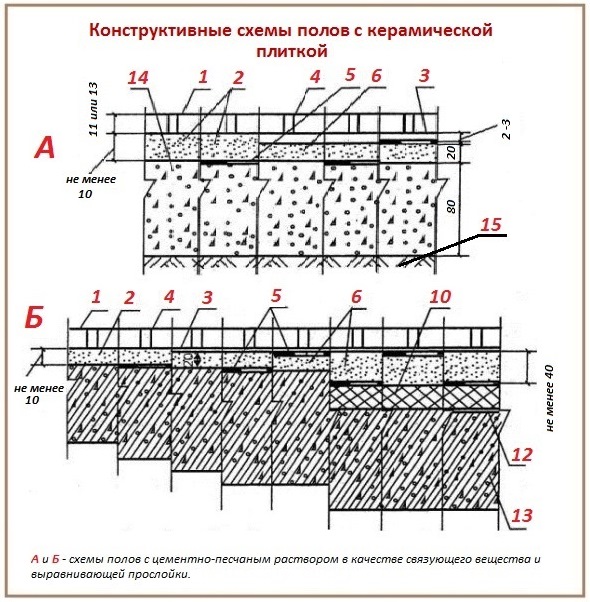
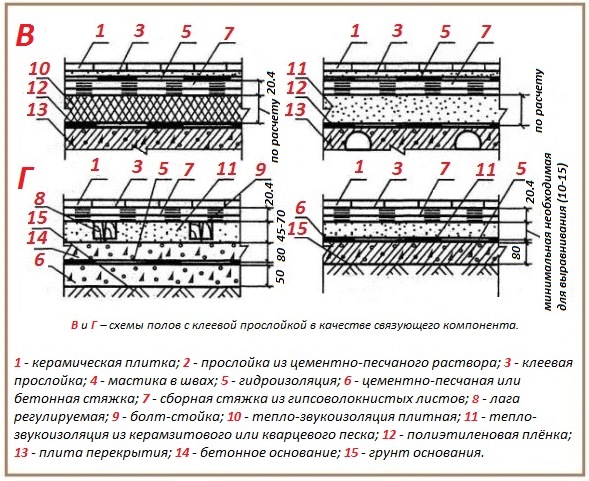
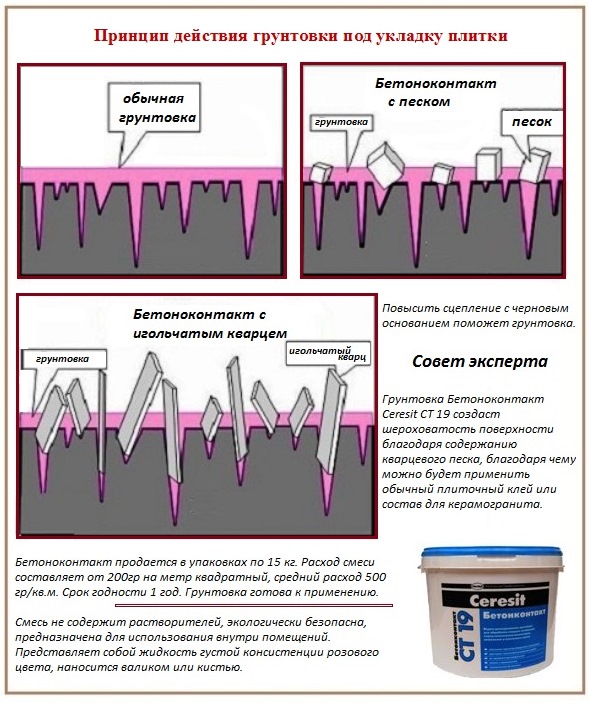
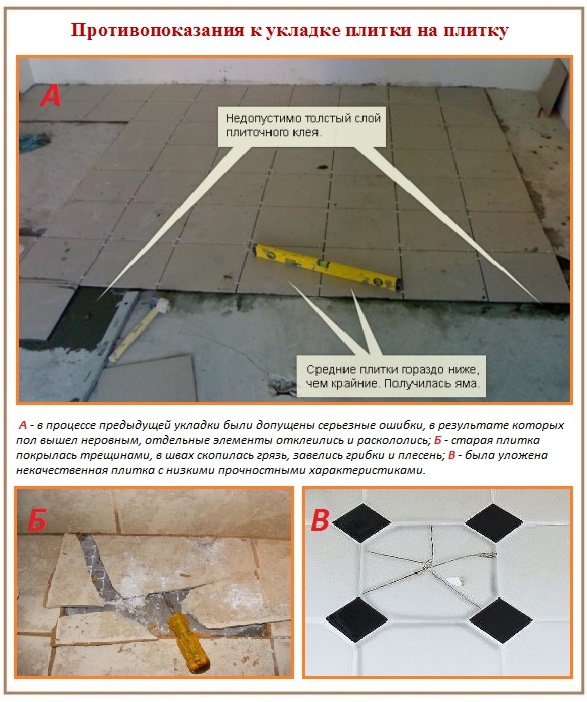
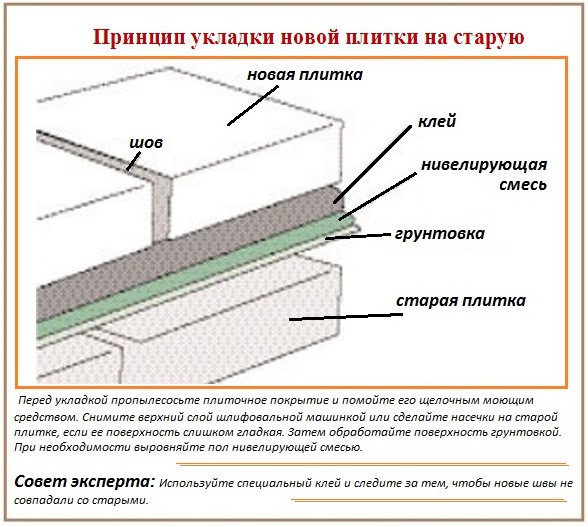
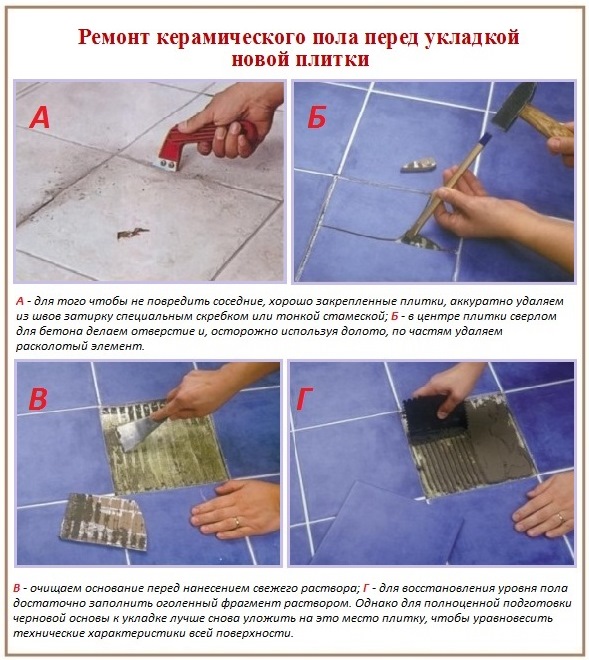
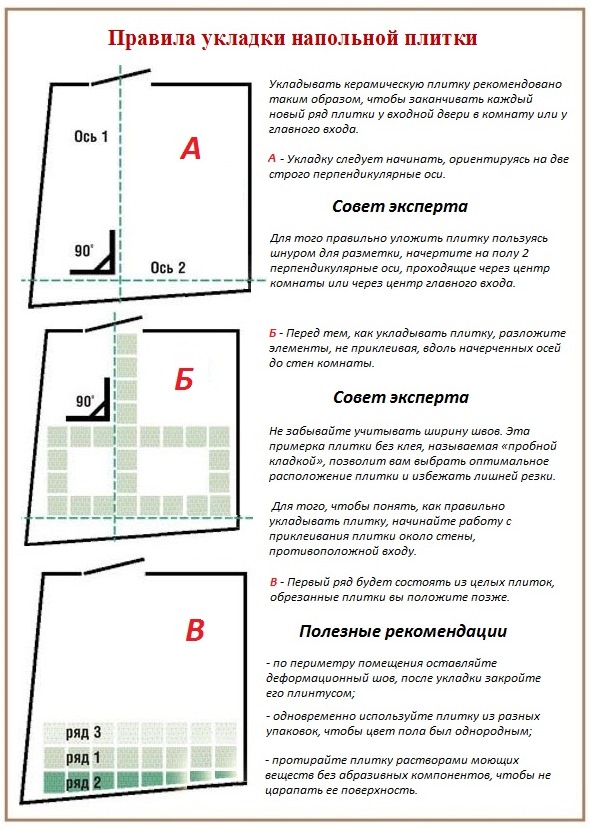
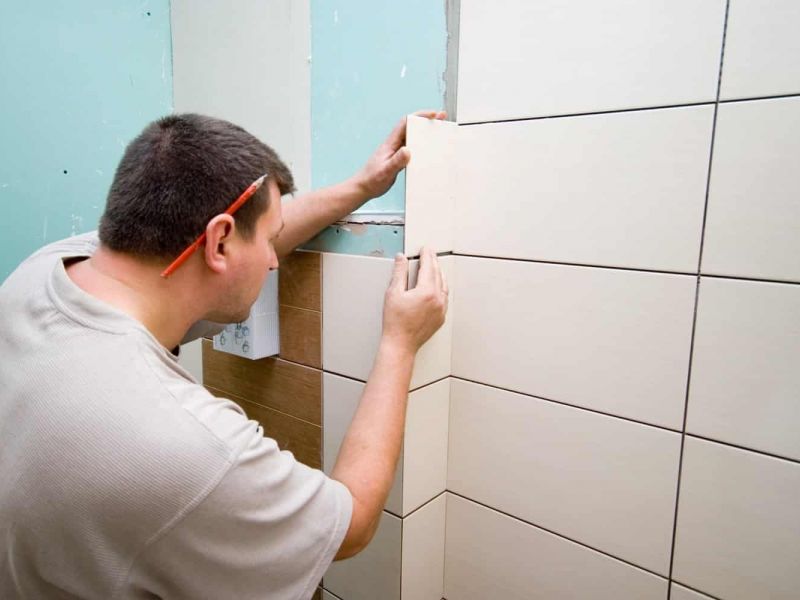
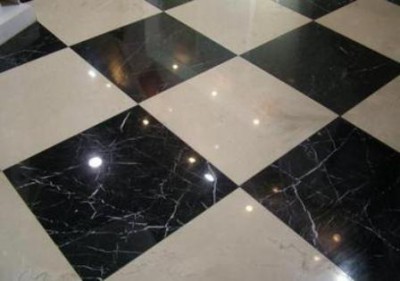
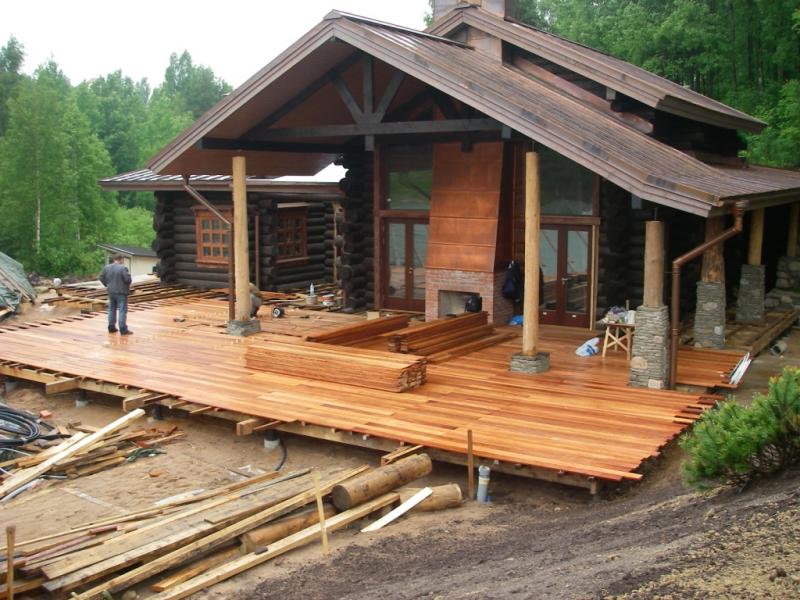
5 comments